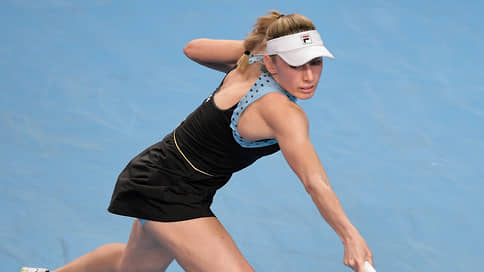The first rackets of the trade union – Sport – Kommersant
[ad_1]

Formed more than two years ago, the Professional Tennis Players Association (PTPA), which positions itself as a tennis union, has announced the formation of an executive committee. It included eight current athletes, including one of the founders of the PTPA, 21-time Grand Slam winner Novak Djokovic, the second number of the women’s rating Uns Jabir from Tunisia, as well as two eleventh rackets of the world – Pole Hubert Hurkach and Spaniard Paula Badosa.
Before the start of the Australian Open, the draw of which will take place on Thursday, the PTPA, an organization that has positioned itself as a union representing the interests of professional players, both men and women, has been reminded of its existence for more than two years. Her creation in August 2020 almost provoked a split in the tennis community. Moreover, the then world ranking leader Novak Djokovic, one of the founders of the PTPA, on his own initiative stepped down as president of the players’ council of the Association of Tennis Professionals (ATP), the body representing the interests of athletes in the ATP. True, the informational hype about the formation of PTPA quickly faded away, and it did not show itself with any concrete steps. Just last week during a tournament in Adelaide, Novak Djokovic stated that PTPA still has potential and therefore “should live”.
Today it became known about the creation of the PTPA Executive Committee, which includes eight people. In addition to Djokovic and Canadian Vasek Pospisil, who co-founded PTPA, it included the second number of the women’s ranking Uns Jabir from Tunisia, who reached the finals at Wimbledon and the US Open in 2022, two eleventh rackets of the world – Pole Hubert Hurkach and Spaniard Paula Badosa, the famous American John Isner and his compatriot, one of the most titled tennis players in doubles, Bethany Mattek-Sands, as well as the Chinese Zheng Saisai.
According to PTPA Executive Director Ahmad Nassar, one of the main challenges that the organization still faces is to shape its goals and functions.
“An advocacy group working on behalf of tennis players is a great story. But what exactly does this mean? I think we should find an explanation,” he said in an interview. Reuters. Judging by the list of athletes included in the PTPA executive committee, the idea of creating this organization enjoys some success among tennis players. However, it is still too early to judge its next concrete steps. Many other questions remain unclear. For example, how will the PTPA budget be formed, which, according to Nassar, should be $5-10 million for its functioning. After all, there seems to be no talk of collecting membership fees. At least until PTPA proves its effectiveness.
And it will not be easy to do this, since the functions that the PTPA theoretically claims are actually performed by the ATP, in which the representatives of the players, according to the charter, have equal rights with the representatives of the tournaments. And if at the height of the coronavirus pandemic, certain claims could still be made against the ATP regarding the support of athletes, then after the announcement in the fall of 2022 of a strategic plan for the transformation of the men’s tour, combined with the growth of prize funds, this topic cannot be considered critical for the ATP.
“It is still not entirely clear how PTPA intends to fit into the existing tennis ecosystem,” says Aleksey Selivanenko, member of the Board of Directors of the International Tennis Federation (ITF). from North American professional sports leagues, in which the interests of athletes are protected by unions. Therefore, PTPA has no real impact on the situation in tennis yet. In addition, in my opinion, athletes now simply cannot have serious claims against the current leadership of the ATP, headed by Andrea Gaudenzi. A notable growth in the Asia-Pacific region’s revenues over the past two years leaves no doubt about the effectiveness of its activities.”
[ad_2]
Source link









